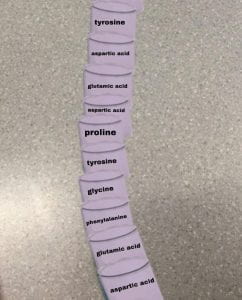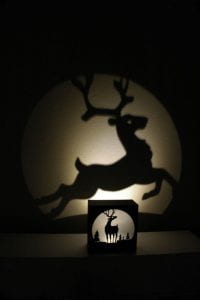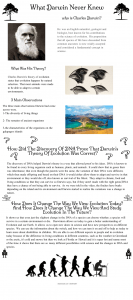Author: Alexis
Protein Synthesis Blog Post
Alexis Hart Protein synthesis 2022-10-20

Explain the entire process of protein synthesis, including everything that happens from when a gene on DNA is activated to when the primary structure of protein is produced.
Explain the process of transcription…
Transcription is the process by which the DNA sequence of a gene is copied to produce an RNA molecule. The main transcription enzyme is RNA polymerase. When RNA polymerase binds to a promoter sequence near the start of a gene, transcription begins.
a) Unzipping & Unwinding
Unwinding/ Unzipping is the opening of the Double Helix structure. The start of transcription is called initiation. It happens when the enzyme RNA polymerase binds to the promoter of a gene. This causes the DNA to unwind, allowing the enzyme to read the bases in one of the DNA strands. The enzyme is now ready to construct an mRNA strand with a complementary base sequence. As a result, two template strands of DNA are created, ready to start the subsequent stage of replication. The replication fork is the location where this enzyme “unzips” the DNA. Unzipping and unwinding allows a opening space for RNA to get access to the base pairs.


a) Complementary Base pairing with DNA
After the DNA structure unzips and unwinds, Complementary Base pairing with DNA occurs. The process known as complementary base pairing occurs when guanine consistently forms hydrogen bonds with cytosine and adenine consistently binds to thymine in DNA. In contrast to the A-T bond, which always shares two hydrogen bonds, the bond between guanine and cytosine shares three hydrogen bonds. In DNA, complementary base pairing is crucial because it enables the base pairs to be ordered in the most efficient way for energy.

a) Separation from DNA
After binding, RNA polymerase divides the DNA strands into single strands, creating the template for transcription. DNA transcription produces a single-stranded RNA molecule that is complementary to one strand of DNA.

b) Explain the process of translation
The translation is the process of converting information passed from DNA as messenger RNA into a series of amino acids linked together by peptide bonds. It is primarily a transformation of one code (nucleotide sequence) to another (amino acid sequence).
b) Initiation
The small ribosomal subunit binds to the beginning of the mRNA sequence during initiation. Then, a transfer RNA (tRNA) molecule starts carrying the amino acid methionine and binds to the mRNA sequence’s start codon. All mRNA molecules begin with the sequence AUG, which codes for methionine. The beginning of mRNA translation is a crucial checkpoint in regulating the level and completeness of protein synthesis. initiation is also known as the beginning step.


b) Elongation
The ribosome keeps translating each codon in turn during the elongation stage. Each amino acid is added to the growing chain and linked by a bond known as a peptide bond. Elongation will continue until all codons have been read. Translation can be considered as the decoding of protein-making instructions, involving both mRNA and tRNA in transcription. The genes in DNA encode protein molecules, performing all of the functions required for life.

b) Termination
Finally, the ribosome terminates when it reaches a stop codon (UAA, UAG, and UGA). The ribosome identifies that translation is complete because there are no tRNA molecules that can recognize these codons. The translation complex disintegrates as the new protein is released. With the help of termination sequences, a new polypeptide chain is released. When the newly formed chain is released, the larger and smaller ribosomal subunits separate.

2. Analyze the models you used to learn.
a) In what ways did your models accurately reflect the process?
The models accurately reflected the process because my group and I got to go by the process step by step which helped in understanding a lot more instead of just seeing a model online. The model cut-outs helped give a visualization of how things moved.
a) In what ways did your model misrepresent the process?
Models are very helpful, but they also have limitations. Models cannot include all the details of the objects that they represent. for example when my group and I looked up a step to confirm if we were doing the process correctly , we were concerned due to the fact that models online are a lot more complex then the paper model we are working on. Besides that, I wouldn’t say there was any kind of misrepresentation I would say that because there were a lot of processes to understand I felt that it was really easy to mess up the process with the models if you didn’t understand what you were supposed to be doing. We had to go to other groups for help just because on occasions we wouldn’t draw the right thing, or tape the right base to each other, just simple things.
a) what changes could be made to the modelling activities to make them better represent the actual process?
For me I thought understanding while building the models was a little challenging, I feel like for me the models were a little challenging for me to understand but eventually with a little help I was able to understand. So I think I would make a change to how complicated the models were and would try and make the more simpler so I could understand what exactly I was doing.
b) Models are commonly used to communicate scientific concepts to non-scientific audiences. Do you think this is an effective way to educate the public about science? Explain why or why not.
As I have learned many people have many different ways of learning and understanding information. For me personally I am a hands on learner, being able to see the process in 3D and being able to replicate it physically for some it is a great way for us to grasp the concept, but sometimes this method doesn’t work for all. I personally think that it was definatly an effective way to educate others, I like hands on learning because the more I can see it in person and recreate the process the more I can attain that information effectively. The one thing that my group and I did notice is that in translation, there are many ribosomes for an mRNA strand which is this activity was not present.
Luminaries Purpose




For my Luminary project I want to do a light box that allows me to show something that I stand for and something that is important to me. I wanted the light box to project a pretty sillhouette. My light box is going to be a women’s body with flowers and butterflies coming out of her neck; the different flowers are a representation of women’s bodies and how they come in all different shapes and sizes. My message behind this light box is that in society today, especially with teenage girls, we are all so fixated on being perfect when in reality perfection does not exist. The many different shapes colors and sizes of one body is perfect in so many different ways.

